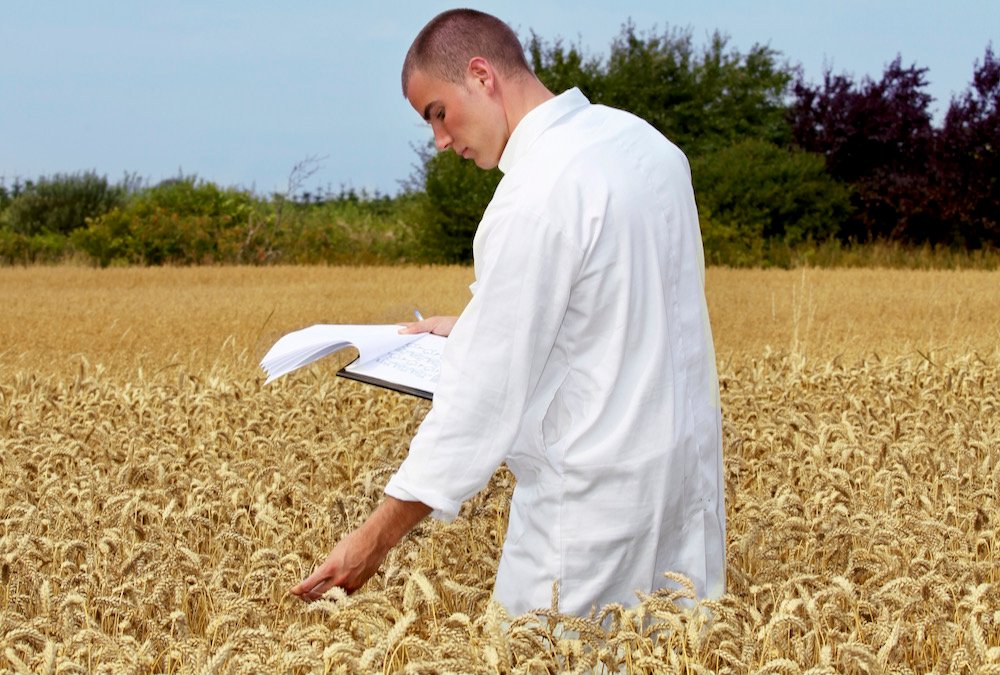Genome mapping changes wheat breeding

Genomic technologies are helping wheat breeders speed the process of finding solutions to longstanding production challenges.
But while DNA sequencing and other approaches are a boon for understanding the large and complex wheat genome, in-field testing for yield stability remains a critical part of cultivar development.
Why it matters: As the genomes of more wheat varieties are mapped, breeders can more quickly and precisely identify and develop cultivars that growers would find most valuable.
Speaking during C&M Seeds 2021 Wheat Industry Day, Curtis Pozniak, director at the University of Saskatchewan’s Crop Development Centre, says the global wheat research community is increasingly using genome sequencing technologies to compare varieties from around the globe, all to develop next-generation varieties.
At his university, that means breeding for higher yields and more marketable characteristics such as higher protein content, milling properties and flexible gluten properties.
Yield stability is another pillar, referring to the ability of the plant to withstand insect and disease pressure as well as extreme weather.
Verifying whether a variety is practically viable requires in-field testing, which Pozniak said needs to be done over many sites, on many plots and over many years. The University of Saskatchewan tests 40,000 individual wheat research plots each year.
Stripe rust, stem rust, leaf rust, common bunt and fusarium head blight draw the most attention when it comes to pathogens. Fusarium takes the top spot, and genomic tools are being used to measure crop resistance.
These and other stresses are tested in heavily irrigated nurseries designed to maximize disease development potential on inoculated plants.
“This really gives us a fantastic ability to differentiate those lines which have better resistance than others,” says Pozniak. The wheat resistance mechanisms to head blight are complex and the plant has no inherent immunity, he adds. Phenotyping – the process of predicting observable traits – is also difficult and costly.
“It takes a long time to build resistance in breeding material. Some varieties that look resistant in one year may turn out to be moderately susceptible in another. That makes breeding very challenging.”
The ability to map genomes from different wheat varieties has become an invaluable tool in the breeding process, says Pozniak. It allows researchers to highlight plants with the specific genes they want to study, while making it easier to understand a genome with five times more DNA than humans.
The efficiency and effectiveness of the approach continue to advance as Pozniak and his colleagues work with others around the globe on the “Ten+ Genome” variety sequencing project. The greater the number of genomes mapped, the greater number of comparisons can be made.
“Genetic difference may in fact explain some of the phenotypic differences that we observe amongst cultivars,” he says.
Globally, efforts to sequence for fusarium head blight resistance are the next steps. Comparative analysis is underway for several gene families identified as potential resistance indicators. DNA markers – DNA sequences with a known physical location on a chromosome – are also being validated to ensure they work in the field.
“Genomic technologies are evolving to improve selection efficacy in wheat breeding and it is having an impact,” Pozniak says.
“Genomic technologies won’t be the magic bullet. I still believe breeders will be needed in the field to allow selection for yield stability, combining all the traits together to form a field-ready cultivar that our producers will be interested in growing.”
Source: Farmtario.com

